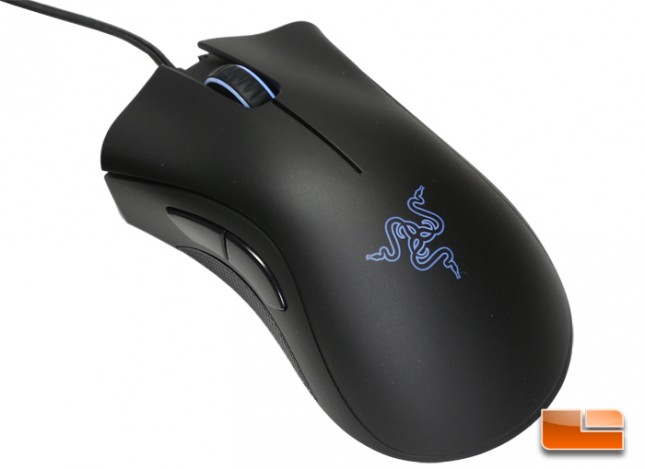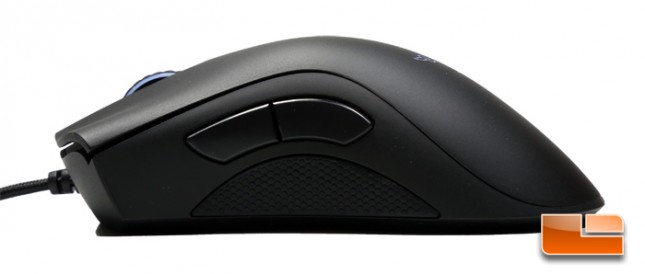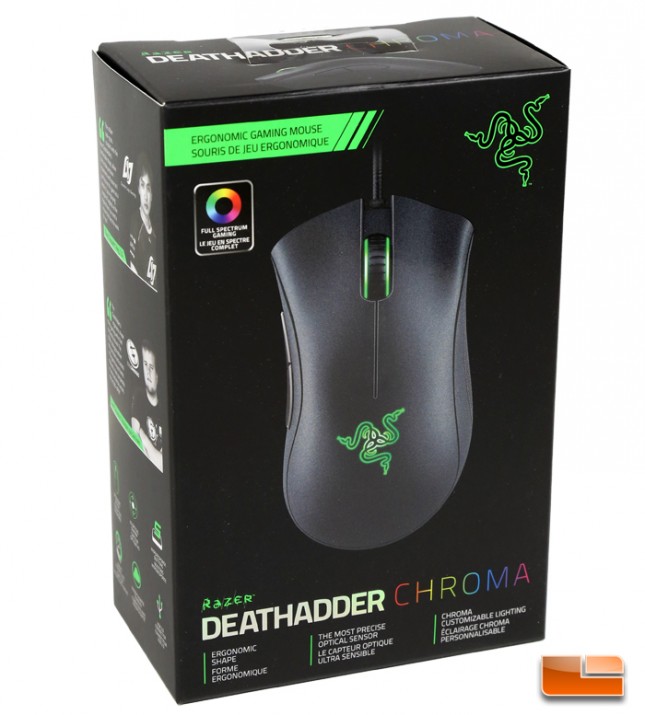Razer DeathAdder Chroma Gaming Mouse Review
Final Thoughts and Conclusion
A few years ago I personally tried out a Razer DeathAdder for the first time unknowingly at a LAN center. I sat down and without looking at the mouse, used it for 40 minutes assuming that the nimble mouse with the comfortable ergonomic shape was that of a Microsoft Intellimouse. It was after that session that I looked down under my hand and instantly recognized the black mouse with a glowing blue scroll wheel and Razer logo to be the DeathAdder.
The DeathAdder has one of the rarer distinctions of being suitable for both palm and claw grips, comfortably supporting the hand in either position. Ergonomic gaming mice are more typically optimized to favor one grip over the other. The DeathAdder is also very maneuverable from what feels to be a spread weight distribution which makes it feel lighter. The buttons including the large thumb buttons are tactile and overall just right. The scroll wheel is standard. The new multicolor lights are a nice feature if that’s your thing, but they aren’t bright enough to look impactful in a well-lit room and obviously the hand is going to obscure and block the lights during use.
The Synapse software is easy to use, the interface has that aggressive edgy Razer look, and it’s functionality is very complete as far as mouse software is concerned. What we don’t like is the shady online component and the occasional intrusiveness, though the latter issue was more pronounced when using the software in conjunction with the Razer Kraken headset. Razer still asserts that Synapse’s cloud syncing functionality is superior to implementing onboard mouse memory. It’s backward thinking ironically since Razer has a large brand presence in competitive gaming and esports. Synapse is a roughly 50 MB download which then after installation requires a 50 MB update for the DeathAdder Chroma. The inconvenience of having to set up the software on additional computers could be resolved with onboard memory, something which is featured on the competing Logitech G502 Proteus Core.
Fortunately, Synapse is not required to use the Razer DeathAdder Chroma. The comfortable ergonomic design is fantastic on its own accord, placing the DeathAdder in the echelons of great gaming mice and often times becoming the one beat by competitors. Its accessibility to the masses is hampered by Razer’s penchant to attach additional and sometimes unnecessary premium features. There’s nothing new to the DeathAdder Chroma over the 2012 DeathAdder beyond the gimmicky 10,000 dpi sensor that may actually not be natively tracking that resolution (Update 11/13/2014: it does, see detailed explanation on page 2) and the more reasonable aesthetic RGB lighting update that unifies the entire Chroma lineup. That apparently keeps the DeathAdder Chroma base price the same as its 2012 predecessor at $69.99. Despite Razer’s trademark arrogance and stubbornness, much of the marketing for the Chroma update has been quite agreeable. The Chroma products are first and foremost RGB lighting updates to a set of popular products and Razer leaves it up to you and your wallet if that’s what you really want.
Legit Bottom Line: The Synapse software is dispensable and the multicolor light update is hardly revolutionary, but the Razer DeathAdder Chroma doesn’t take away from its celebrated design.
